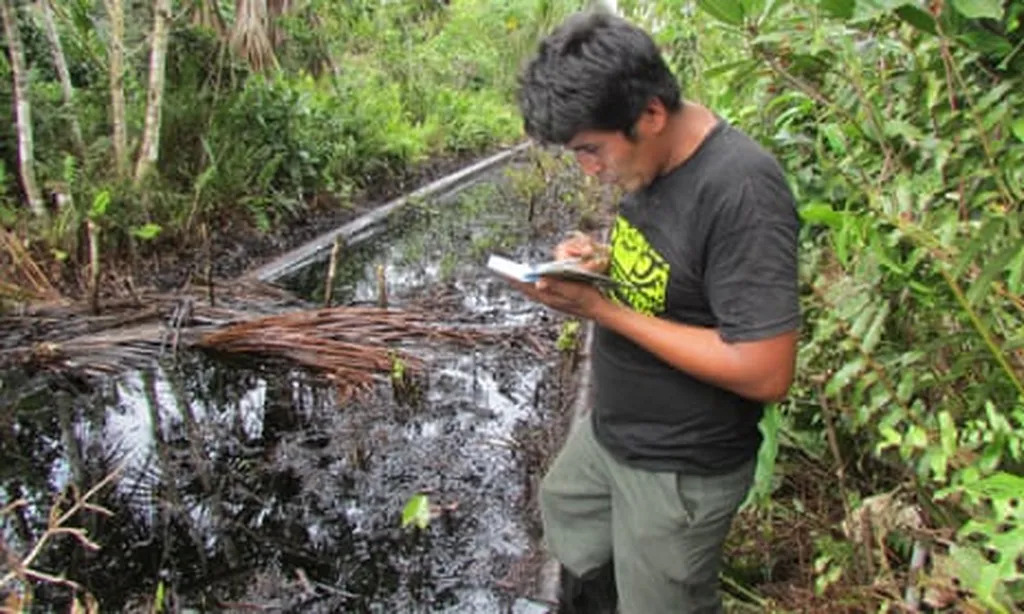In the heart of the Peruvian Andes, a critical ecosystem is sending out a distress signal. The Huaper Wetland, a vital water source and biodiversity hotspot in the Huanta Province, is showing early signs of degradation, according to a comprehensive study published in the *Journal of Hydrology: Regional Studies* (translated from Spanish). The research, led by Bruno K. Cardenas Morales of the Universidad Nacional Autónoma de Huanta, offers a stark reminder of the delicate balance between human activity and environmental health, with implications that resonate far beyond the local community.
The Huaper Wetland, nestled at 2,353 meters above sea level, plays a pivotal role in irrigation, water supply, and biodiversity conservation. However, unregulated tourism, agricultural runoff, and poor waste management are taking their toll. Cardenas Morales and his team conducted an integrated geochemical, hydrochemical, and remote sensing assessment to understand the extent of the damage and identify potential solutions.
“Our findings indicate that the wetland is at a critical juncture,” Cardenas Morales said. “The initial signs of water quality deterioration are alarming, and immediate action is needed to prevent further degradation.”
The study analyzed water samples collected during four campaigns across two hydrological years, representing both Austral summer and winter. Key parameters such as pH, electrical conductivity, total dissolved solids, dissolved oxygen, and potentially toxic elements were measured. The results revealed a decline in water quality, with nitrate levels exceeding national standards in November 2023. The Water Quality Index dropped from “Excellent” in 2023 to “Good” in 2024, signaling a worrying trend.
Sediment analysis using Energy Dispersive X-ray Spectroscopy (EDX) and X-ray Diffraction (XRD) confirmed the dominance of calcite and magnesium calcite, with traces of nitratine suggesting agricultural influence. Surface moisture dynamics were assessed using the Normalized Difference Water Index (NDWI) from Sentinel-2 imagery, revealing a persistent decrease in surface moisture.
The study’s findings have significant implications for the energy sector, particularly in terms of water resource management and sustainability. As water scarcity becomes an increasingly pressing issue, understanding the geochemical and hydrochemical dynamics of critical ecosystems like the Huaper Wetland is crucial. The research highlights the need for land-use regulation, salinity control, and cost-effective long-term monitoring to ensure the sustainability of these vital resources.
“Our research underscores the importance of integrated approaches to water resource management,” Cardenas Morales said. “By combining geochemical, hydrochemical, and remote sensing data, we can gain a more comprehensive understanding of the challenges facing these ecosystems and develop effective strategies to address them.”
The study’s findings also shed light on the potential mobilization of arsenic and lead due to elevated sodium concentrations and low dissolved oxygen levels. This could have significant implications for water treatment and infrastructure development in the region.
As the world grapples with the impacts of climate change and environmental degradation, the Huaper Wetland serves as a microcosm of the broader challenges we face. The research led by Cardenas Morales offers a roadmap for preserving these critical ecosystems and ensuring their sustainability for future generations. By implementing the recommendations outlined in the study, we can take a significant step towards safeguarding our most precious natural resources and securing a more sustainable future for all.
The study, “Geochemical, hydrochemical and remote sensing study of an Andean calcareous wetland in Huanta, Peru,” was published in the *Journal of Hydrology: Regional Studies*.

